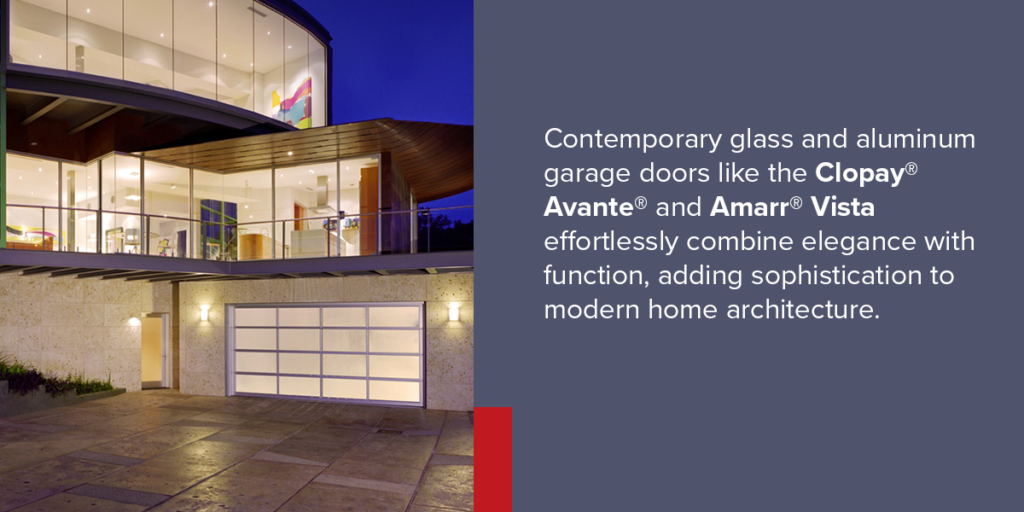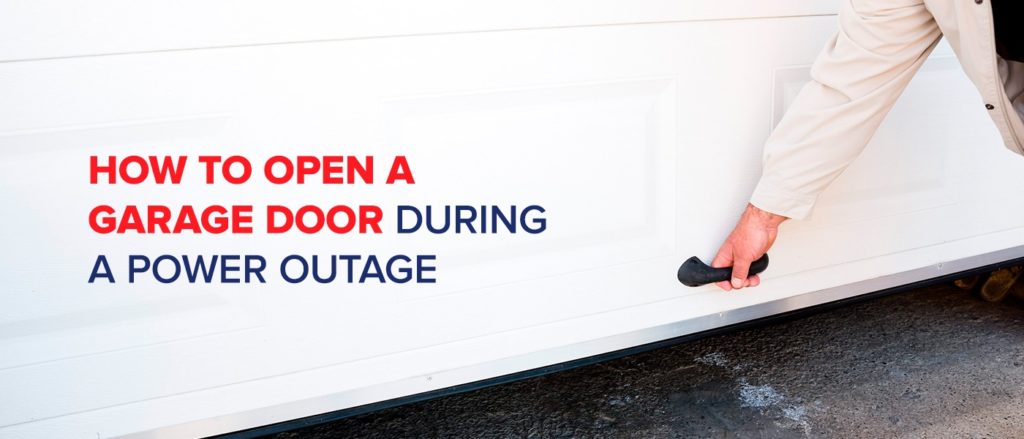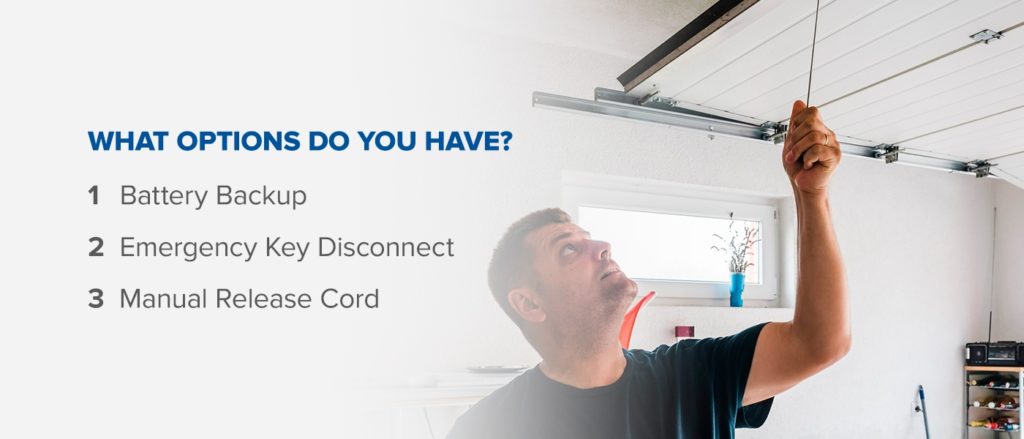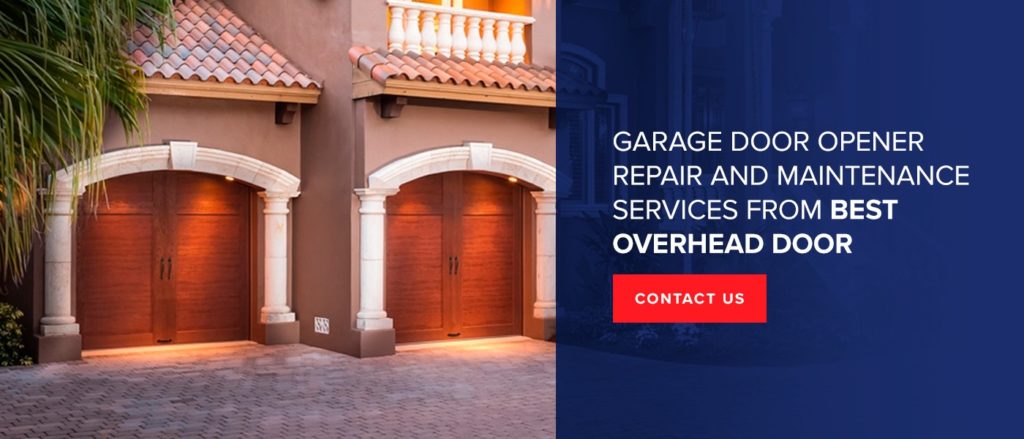Elevate Your Curb Appeal With Our Garage Door Trends for 2024
Home design trends continually change, and 2024 is no exception. These shifts in taste impact every aspect of your house’s interior and exterior, including garage door styles. Explore the designs, colors and features on track to become this year’s popular options for transforming the look, feel and function of homes everywhere.
Introduction to 2024’s Garage Door Trends
Garage doors are a prominent feature of many houses, forming a substantial portion of their exterior. As a result, they’re key to your property’s overall visual appeal, security and access.
Best Overhead Door has over 30 years of experience helping Portland area builders and homeowners elevate beauty, safety and convenience. We’ll help you do the same with the industry’s most dependable garage doors and fully customized solutions.
Unveiling Top Garage Door Designs and Material Trends
The hottest design trends for 2024 include tailored approaches, a focus on environmental friendliness and contemporary materials.
Crafting a Unique Home With Custom Design
Every home and resident’s personality is unique. A customized garage door is perfect for expressing these differences with style. Today’s options allow for more configurations than ever, and the almost limitless combinations possible mean you can personalize your door to any taste.
Merging Style With Sustainability Through Eco-Friendly Door Options
Modern garage door designs go beyond looks and feature insulation to help minimize heating and cooling. Doing so results in less stress on climate control systems, lower resource consumption and a reduced carbon footprint. As a bonus, these doors also frequently save money on energy costs and HVAC service!
Exploring the Power of Glass and Insulated Garage Doors

Contemporary glass and aluminum garage doors like the Clopay® Avante® and Amarr® Vista effortlessly combine elegance with function, adding sophistication to modern home architecture. Insulated glass options mean boosted energy savings and sustainability, which is increasingly important in home improvement projects.
Popular Garage Door Color and Style Trends Defining 2024
The year’s likeliest color choices and style trends showcase a range of possibilities to inspire you.
Forecasting the Colors for Garage Doors in 2024
Two primary color movements are dominating homeowner preferences this year. Some choose timeless shades with neutral hues, from cool white to warm gray to soft black. Others use color to make a bold statement, opting for rich blues, vibrant reds or tropical greens that add unique flair.
Discovering What’s New in Emerging Design Trends
Today’s garage door options range from classic elegance to modern simplicity. Faux wood promises to be a popular choice, combining easy maintenance with the warmth of a natural wood look. Demand for contemporary-style doors remains strong this year.
Navigating 2024’s Garage Door Trend FAQs
Answers to our customers’ frequent questions about 2024 trends appear below.
What Other Door Design Trends Have You Identified?
Customized garage doors hold the top spot for 2024. Homeowners like you have many options to create unique curb appeal, from hardware design to window styles and colors to materials.
Beyond appearance, homeowners are seeking out other features in their garage door designs, including smart technology integration that simplifies access management. There is also an increased focus on more advanced security and safety to provide additional peace of mind.
What Are the Year’s Most Anticipated Trends?
We see 2024’s garage door trends evolving to meet overall homeowner values. Simple function is no longer enough — newer door designs blend aesthetics, sustainability, personalization, security and technology.
Enhance Your Portland Area Home With Best Overhead Door
Keeping up with the latest trends is ideal for creating superior curb appeal when considering a garage door upgrade or replacement. Best Overhead Door can help you install the perfect one with many different options to bring your vision to life. Simply browse our lineup of residential garage doors online, or experiment with our design tools for inspiration.
You can also contact us for design assistance or to request a quote on your personalized door.
What (Else) To Replace After a Garage Door Spring Breaks
Most people do not realize that factory standard parts on a garage door have a life span of 10,000 cycles. This includes the springs, rollers, bearings, drums and cables. The spring is usually the first thing to go which gives you a sign that you had used your garage door at least 10,000 times. Some people just change a spring but this just causes more problems later on. It is best at this time to change the springs, rollers center bearing, bearing plates, spring shaft or tube and cables.
Why You Should Replace Your Remaining Garage Door Parts When Your Spring Breaks
When replacing a spring you should consider replacing the other parts that wear out as well, especially because Garage Door springs work together to ensure a smooth operation. Just because you can’t see the wear, doesn’t mean it is OK. It will cause further issues which will cost you more money from all the return trips and missed days of work. The life cycle of your garage door parts is about three years.
The question is, how often do you use your garage door? By the time a husband goes to work and comes home, a wife goes to work and comes home, kids go to school, take out the trash, go to soccer practice or go grocery shopping you can easily open and close your door 10 times a day which accounts to about 3650 times a year. If you’re one that uses your door about 10 times a day you might want to consider high cycle springs, nylon ball bearing rollers, new center bearings and end bearing plates and cables.
An example of this is a standard roller which will lift about 50 pounds and be good for about 10,000 cycles while an 11-ball bearing roller is good for 75 pounds at 15,000 cycles. The best roller, a 13-ball bearing 6200 Z sealed roller, is rated at 100 pounds and good for 100,000 cycles; the cost difference between the rollers is only a couple of dollars.
There are several types of drums to use- the standard one holds about 530 pounds. You do have options of drums that will hold 750 pounds and 1500 pounds. The grooves in the drums wear out from the cables and cause the cables two roll over themselves which in turn causes the cables to fray. This can cause major issues if the cable breaks and can be very dangerous.
Get Help From a Member of Our Team
The most common item on your door that breaks first is the spring, but it is a reminder to change everything else on your doors. Garage door springs are offered in a factory standard 10,000 cycles, 15,000 cycles 25,000 cycles or more. To get a high cycle spring, the wire size has to be bigger and the spring has to be longer in order to get the same IPPT, (Inch Pounds Per Turn). I know this sounds complicated, but trust me, you won’t be able to add or remove any turns on the spring. If you have any questions regarding spring size reach out to one of our technicians and they’ll be happy to help!
Here at Best Overhead Door, we are committed to fixing your door right the first time so you’re not left with any lasting issues. This is why we offer packages at discounted rates and routine maintenance services so you can come home from work every day knowing that your door will be quiet, reliable and work every time.
How to Protect Your Garage Door From Heavy Rain
When a storm rolls through and brings a lot of rain, your house may be susceptible to water damage or flooding. The most vulnerable places that can experience water damage during heavy rain are your garage door and the inside of your garage.
Your garage door is the main protective barrier that keeps the items inside of your garage safe from the outdoor elements. If your garage door succumbs to water damage, it can impact the door’s integrity and potentially affect the belongings you store in the garage.
Learn how to prevent rain damage on your garage door and the effects heavy rain can have on your residential door.
Lasting Effects Heavy Rain Can Have on Your Garage Door
It’s crucial to protect your garage door from heavy rain to prevent any long-term issues. Too much rain is responsible for a few lasting problems that garage doors can take on after an intense rainstorm.
Many homes have wooden residential garage doors, and this type of door is the most likely to receive rain damage. Like other wooden items or furniture, wet wood can drastically change shape or size because of water exposure. Some of the main effects water can have on a wooden garage door and other materials are:
- Warping: Heavy rain can warp your garage door and impact its functionality. Your garage door may not open or close properly because of its size or shape change after water damage. This warping can cause damage to your garage and be potentially dangerous.
- Absorbing: A lot of rain can soak into your garage door and make it extremely heavy. The weight difference is exponentially greater than when the garage door was first installed. The extra weight puts more stress on your garage door opener and the other features of your garage. It can also make manual operation difficult or even hazardous.
- Freezing: Heavy rainfall can pool up in the rubber seals and other parts of your garage door. When the temperatures drop below freezing, the leftover water sitting on your door will freeze. This effect can freeze your garage door shut and impact the operation of your garage door opener. You don’t want to wait until the ice melts to use your garage door.
- Rusting: Heavy rain can cover all areas of your garage door and garage door opener system and cause the metal pieces to rust. This damage can affect the garage door panels and lead to a faulty garage door opener.
Even if one panel on your garage door is impacted by heavy rain and changes shape or size, the whole garage door won’t function properly. The part of your garage door that is at high risk for rainwater damage is the bottom panel because it makes contact with the wet ground.
The risks of heavy rain on your garage door may cost you repairs. Homeowners can’t avoid extreme weather or rainy days, but you can take steps to protect your garage door from water damage and improve its longevity.
How to Protect Your Garage Door From Rain
If you don’t take the necessary steps to prepare your garage door for heavy rain and flooding, your door may experience damages, or the inside of your garage may flood.
Take the best care of your garage door so it can last longer and protect the inside of your garage. Follow these helpful tips to prevent heavy rain damage on your garage door:
1. Install New Weatherstripping
You can protect your garage door and the items inside your garage by replacing the weatherstripping on your garage door. People use weatherstripping on many outside entry points to prevent rain, snow and other outdoor elements from making their way inside. The strip will make a secure seal on the bottom and sides of your garage door and prevent heavy rain from leaking inside.
If you have a newer garage door, check to make sure the weatherstripping is intact with no tears or rips.
2. Test Your Garage Door’s Function
If a storm is coming your way and you know you’ll get a few inches of rain, check to make sure your garage door is working properly. If you try to close your garage door before a big storm and the door is not working, the inside of your garage and all of your belongings can become soaked.
Start by testing its ability to open and close. Clean off the sensors and move any objects that might get in the way of the garage door closing. If something is off, you know to contact a technician to diagnose the problem and get your garage door back up and running.
3. Look at the Quality of Your Garage Door
Check to make sure there aren’t any cracks or holes in your garage door that could let in water from a storm. The place you should pay extra attention to is the bottom of your garage door. If the panel has a crack or is warped and doesn’t align with the ground, rainwater can get inside your garage.
4. Add a Trench Drain
If the water flows toward your garage door, a bad rainstorm can quickly overwhelm your garage door with water. Installing a trench drain can help draw rainwater away from your garage and decrease the chance of it flooding or taking on too much water.
5. Clean Your Gutters
If you have rain gutters above your garage, check to see if you need to clean them out. You want water to flow away from your garage instead of falling down right on top of the garage door. If you don’t have gutters above your garage door, consider installing them to protect it.
6. Check the Water Path From Your Garage Door
When it rains outside, does the water flow away from or toward your garage door? If it runs toward the garage, make sure you have either weatherstripping installed on the bottom or a trench drain to divert the water.
What to Do if Your Garage Door Does Get Damaged or Flooded
If your garage door is experiencing flooding or water damage, here are the main actions to take:
- Clean up the water immediately to stop further damage.
- Start working on repairing the damage or contact a garage door service technician right away.
- Consider replacing your garage door if the damage is extreme.
Contact Best Overhead Door for Garage Door Service and Installation
When you need garage door service, you need help from the team at Best Overhead Door. We provide excellent maintenance, replacements and repairs and information on the best garage doors for residents in Washington and Oregon. If your garage door has water damage from a bad rainstorm or you want routine maintenance on your door, contact the experts at Best Overhead Door to schedule service.
How to Open a Garage Door During a Power Outage
We often take automatic garage door openers for granted, especially when they are working as they should. Garage door openers rely on electricity to operate the opening and closing of the door. But will the garage door open if the power is out? Without power to the opener, you may be stuck either inside or outside the garage.
If you’ve experienced this situation, you’re aware of the frustration and inconvenience it can cause. Fortunately, there are a few solutions to this problem, and it is possible to open the garage door when the power is out. In this guide, we’ll cover a few different methods for opening the garage door without power.
What Options Do You Have When There’s No Power?
If the power goes out and you need to open your garage door, do you know what to do? You may have a few different options to fix the problem. However, the best solution for you will depend on the specific brand and model of garage door opener that you have, and what special features are included. It can also depend on the situation you’re in — for example, why the power is out and if the opener is still functioning otherwise. Here are the three most common options for opening a garage door without power:
1. Battery Backup
Some models of automatic garage door openers come equipped with a backup battery. This allows you to open the door with your remote or keypad, even if the power is out in the area. However, this function will likely not work if the opener is broken, malfunctioning or if the battery is dead.
Check your unit’s manual to see if you have this feature and if you should check to make sure the battery backup is charged and ready for an emergency. Note that this feature is often only included if the garage door is the only entrance and exit to the garage, and when there is no other door for people to use.
2. Emergency Key Disconnect
This is another emergency feature that is usually only included if the garage door is the only entrance or exit to the garage. If you have this feature, you’ll see a keyhole lock partway up on the outside of the garage door. You should have a key for this lock, which you can use to open the emergency disconnect.
When unlocked, the unit pulls a cable out that will disengage the lock on the opener motor, so you can manually open your garage door by pushing the door up. This method works during a power outage, and even if the opener is broken or malfunctioning.
3. Manual Release Cord
This feature comes standard with any automatic garage door opener on the market today. With normal functioning, the opener locks your door in the closed position as a safety feature, so someone can’t push the door open at any time. However, in an emergency situation, you can pull the manual release cord to disengage the opener lock, so you can open the door manually.
Using the Manual Release Cord to Open Your Garage Door Without Power
Every garage door opener should have a manual release cord, so this may be the best way to open the garage door in case of an emergency. We’ll cover the basic steps for how to open a garage door manually using the release cord:
1. Make Sure the Door Is Down
Before you attempt to manually move the door, make sure the door is in the down, or closed, position. If the garage door is up or in the open position when you pull the manual release cord, it can be extremely dangerous. This is because it puts all the pressure on the springs. If the springs are broken or damaged when you pull the cord, there is a higher risk of the entire door falling off the tracks and onto whatever is below. If you’re standing below the door, this could result in serious injury, as well as damage to your car and anything else in the garage.
2. Pull the Release Cord
As long as the door is down, you can pull the manual release. You’ll find the manual release cord hanging from the main opener motor unit. This cord is often colored red and may have a T-shaped plastic handle at the end that is easy to grab. Pull the handle on the release cord to unlock the door from the opening mechanism.
3. Manually Move the Door as Needed
At this point, you should be able to safely and easily push the door open. Move the door up and down as many times as needed during the emergency, but be sure to return the door to the closed position when you are done. This is an important step in order to return the cord to a safe position, resume normal function and ensure the release cord is in the right position the next time you need it.
4. Pull the Release Cord Back Towards the Door
This step allows for the trolley to be connected again and for the spring lever to return to the connected position as well. Simply pull on the release cord again, downward and towards the door, away from the motor.
5. Reconnect the Trolley and Opener Carriage
Next, you’ll need to connect the trolley to the opener carriage again, and there are a couple different ways to do this. One method is to manually push the door until the trolley and opener carriage reengage. An even easier method is to push the button on your remote or keypad, and the connection should happen automatically. You should hear a loud click as everything locks back into place. Then, the emergency release cord should be reset and waiting for the next time you need it, and your garage door should be able to function normally.
Garage Door Opener Repair and Maintenance Services
Now that you know how to open a garage door without electricity, you’ll be more prepared for the next power outage or other emergency. If you’re experiencing problems when the power is working and you need garage door opener repair or maintenance, contact Best Overhead Door for service. For nearly 30 years, we’ve been the go-to garage door opener service company for the entire Portland, Oregon, metro area and for Vancouver, Washington. Give us a call at 503-620-1205 or contact us online to schedule your service today.



